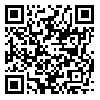Volume 8, Issue 18 (3-2018)
Res Anim Prod 2018, 8(18): 131-138 |
Back to browse issues page
Download citation:
BibTeX | RIS | EndNote | Medlars | ProCite | Reference Manager | RefWorks
Send citation to:



BibTeX | RIS | EndNote | Medlars | ProCite | Reference Manager | RefWorks
Send citation to:
Mirhoseini S Z, Ghavi Hossein-Zadeh N G, Hadinezhad F. (2018). Comparison of Non-Liner Growth Models to Describe the Growth Curve from Birth to Yearling in Markhoz Goat. Res Anim Prod. 8(18), 131-138. doi:10.29252/rap.8.18.131
URL: http://rap.sanru.ac.ir/article-1-903-en.html
URL: http://rap.sanru.ac.ir/article-1-903-en.html
Abstract: (5799 Views)
The objective of this study was to select the best model among five non-linear growth functions, i.e., Brody, Gompertz, Logistic, Von Bertalanffy and Negative exponential for describing the growth curve in Markhoz goat. The data included 5557 body weight records of goats from birth to yearling which were collected during 2006 to 2013 at Sanandaj Research Station. Growth curve parameters (A, B, K) were estimated by the NLIN procedure of SAS program and in order to compare different models for selecting the best model, statistics of coefficient of determination (R2adj), Akaike´s Information Criterion (AIC), Bayesian Information Criterion (BIC), Root Mean Squares Error (RMSE) and Durbin-Watson were calculated. For all animals, Logistic model was the best model as provided the greatest R2adj and the lowest values of RMSE, AIC and BIC than other models and this model could indicate the best prediction of growth in Markhoz goat. The best selected models for predicting growth of males and females were Brody and Gompertz models, respectively; and Logistic model was selected as the best model for both singles and twins. The negative exponential model provided the worst fit of growth curve for all animals, males, females, singles and twins. Logistic model can provide the best prediction of growth pattern of Markhoz goat over a definite time period.
References
1. Abegaz, A. and J.B. VAN WYK and J.J. Olivier. 2010. Estimation of genetic and phenotypic parameters of growth curve and their relationship with early growth and productivity in Horro sheep. ArchivTierzucht, 53(1): 85-94. [DOI:10.5194/aab-53-85-2010]
2. Addrizzo, J.R. 1992. Use of goat meat as therapeutic acids in cardiovascular diseases. www.smallstock.info/reference/meat-goat/handbook/health.
3. Bahreini Behzadi, H., A. Aslami Nejad and M. Ebrahim Zadeh. 2010. Estimation of non-liner growth models in growth prediction in Balouchi sheep The 4th Congress on Animal Science. University of Tehran.
4. Ben Hamoudaa, M. and N. Atti. 2011. Comparison of growth curves of lamb fat tail measurements and their relationship with body weight in Babarine sheep. Small Ruminant Research, 95: 120-127. [DOI:10.1016/j.smallrumres.2010.10.001]
5. Blasco, A. 2001. The Bayesian controversy in Animal Breeding Animal Science. Journal of Animal Science, 79: 2023-2046. [DOI:10.2527/2001.7982023x]
6. Da Silva, L.S.A., A.B. Fraga, F.D.L. Da Silva, P.M.G. Beelen, R.M.D.O. Silva, H. Tonhati, C.D.C. Barros. 2012. Growth curve in Santa Ines sheep. Small Ruminant Research, 105: 182-185. [DOI:10.1016/j.smallrumres.2011.11.024]
7. Dubeuf, J.P. and J. Boyazoglu. 2009. An international panorama of goat selection and breeds. Livestock Science, 120: 225-231. [DOI:10.1016/j.livsci.2008.07.005]
8. Ebangi, A.L., L.N. Nwakalor and D. Abba. 1996. Factors affecting the birth weight and neonatal mortality of Massa and Fulbe sheep breed in a hot and dry environment, Cameroon. Revue d'Elevage et de Medecine Veterinaire des pays Tropicaux, 49: 349-353.
9. Fitzhugh, Jr.H.A.1976. Analysis of growth curves and strategies for altering their shape Journal of Animal Science, 42: 1036-1051. [DOI:10.2527/jas1976.4241036x]
10. Freitas, A.R. 2005. Curvas de crescimento na produc¸ ão animal. Revista Brasileira Zootecnia, 34: 786-795. [DOI:10.1590/S1516-35982005000300010]
11. Ghavi Hossein-Zadeh, N. 2015. Modeling the growth curve of Iranian Shall sheep using non-linear growth models. Small Ruminant Research, 130: 60-66. [DOI:10.1016/j.smallrumres.2015.07.014]
12. Ghavi Hossein-Zadeh, N. 2015b. Genetic analysis of average daily gains and Kleiber ratios in Moghani sheep. Research on Animal Production, 6(11): 108-119 (In Persian).
13. Gbangboche, A.B., R. Glele-Kakai, S. Salifou, L.G. Albuquerque and P.L. Leroy. 2008. Comparison of non-liner growth models to describe the growth curve in West African Dwarf sheep. Animal, 2(7): 1003-1012. [DOI:10.1017/S1751731108002206]
14. Hosseinpour Mashhadi, M., M. Elahi Torshizi and S. Ehtesham Gharaee. 2017. Description of growth curve in male and female lambs of Baluchi breed by application of nonlinear growth models. Research on Animal Production, 8(15): 155-160 (In Persian). [DOI:10.29252/rap.8.15.155]
15. Keskin, I., B. Dag, V. Sariyel and M. Gokmen. 2009. Estimation of growth curve parameters in Konya Merino sheep. South African Journal Animal Science, 39: 2 pp. [DOI:10.4314/sajas.v39i2.44390]
16. Kum, D., K. Karakus and T. Ozdemir. 2010. The best nonliner function for body weight at early phase of norduz female lambs. Trakia Journal Science, 8(2): 62-67.
17. Malhado, C.H.M., P.L.S. Carneiro, P.R.A.M Affonso, A.A.O. Souza and J.L.R. Sarmento. 2009. Growth curves in Dorper sheep crossed with the local Brazilian breeds, Morada Nova, Rabo Largo and Santa Inês. Small Ruminant Research, 84: 16-21. [DOI:10.1016/j.smallrumres.2009.04.006]
18. Ozdemir H. and G. Dellal. 2009. Determination of growth curves in young angora goats. Tarim Bilimleri Dergisi, 15(4): 358-362. [DOI:10.1501/Tarimbil_0000001111]
19. Rashidi A., M. Ramezani and R.V. Torshizi. 2006. Genetic parameters estimation for growth traits and fleece weight in Markhoz goats. 8th World congress on Genetics Applied to livestock Production Belo Horizontes Brazil.
20. Waheed, A., M. Sajjad Khan, A. Safdar and M. Sarwar. 2011. Estimation of growth curve parameters in Beetal goats. Archiv Tierzucht, 54(3): 287-296. [DOI:10.5194/aab-54-287-2011]
| Rights and permissions | |
 |
This work is licensed under a Creative Commons Attribution-NonCommercial 4.0 International License. |



